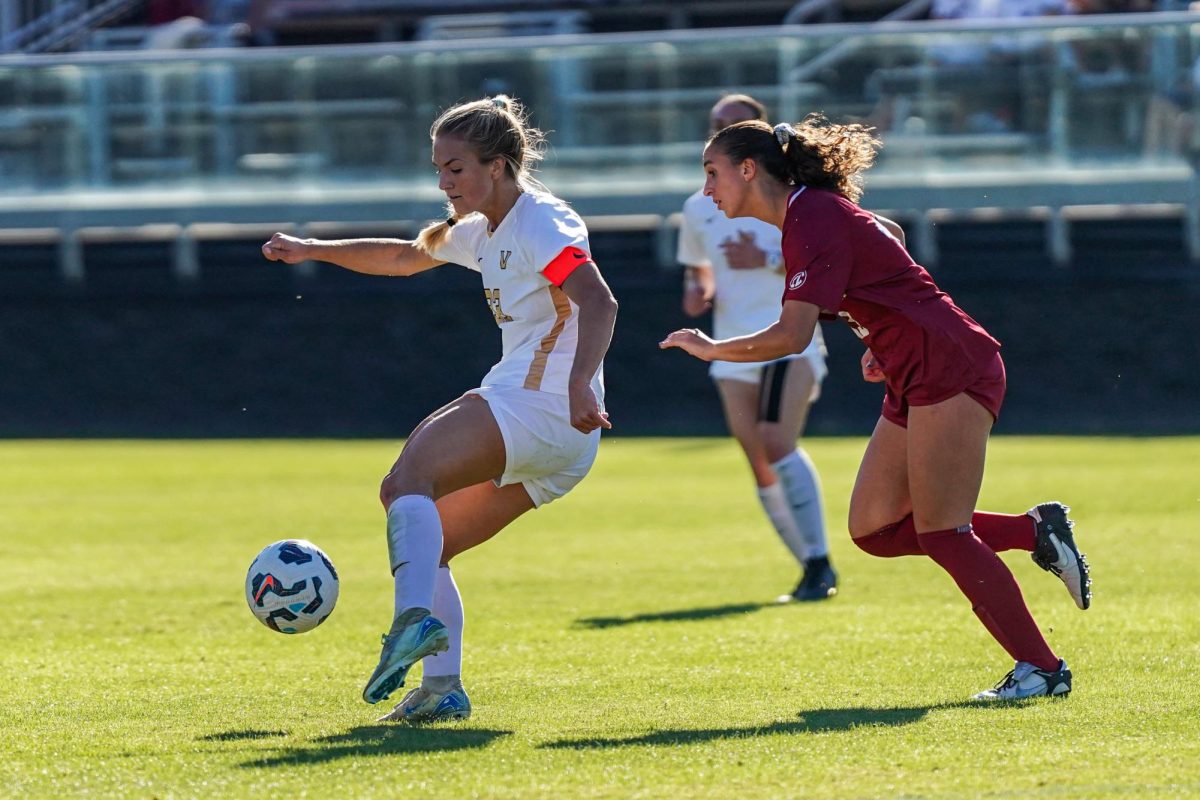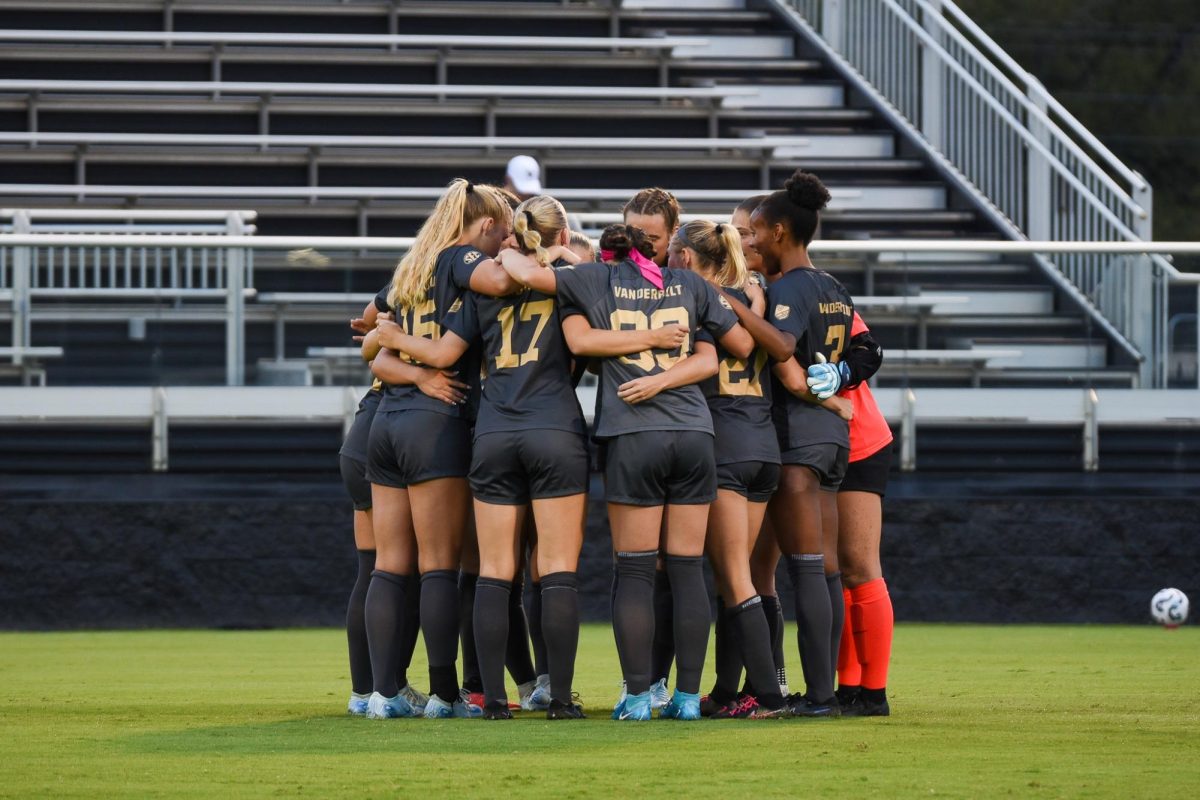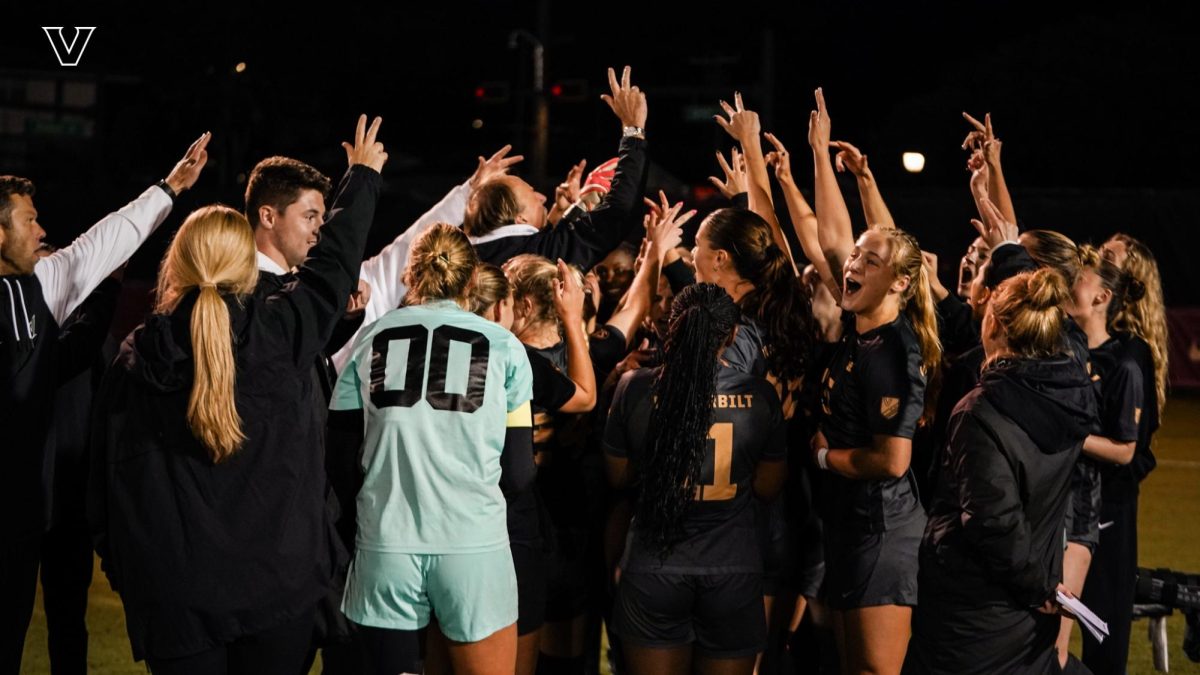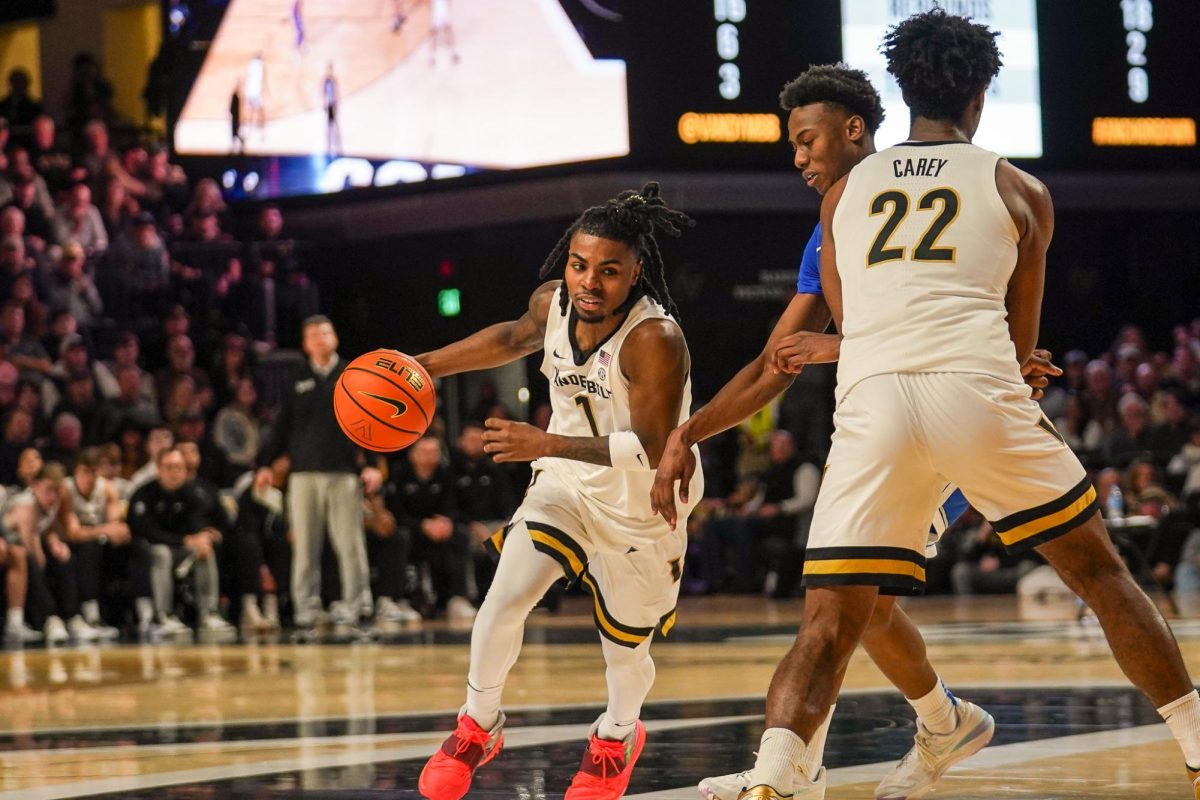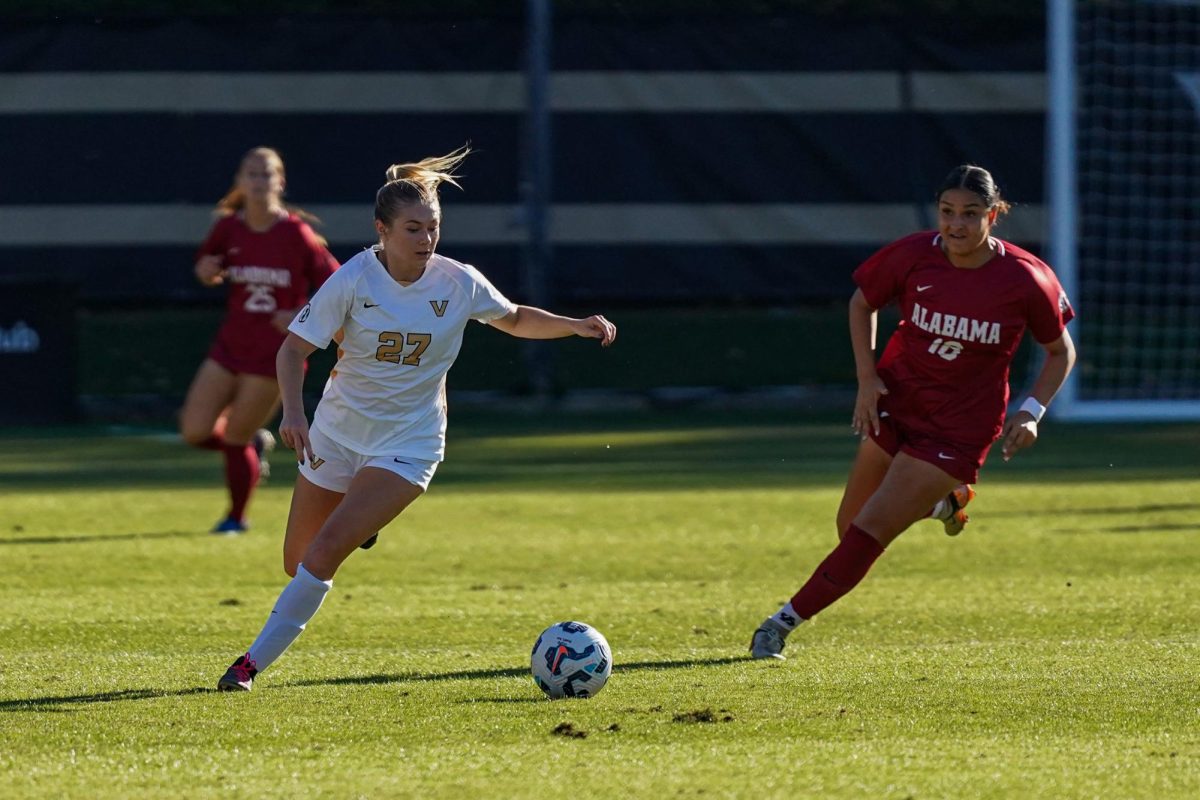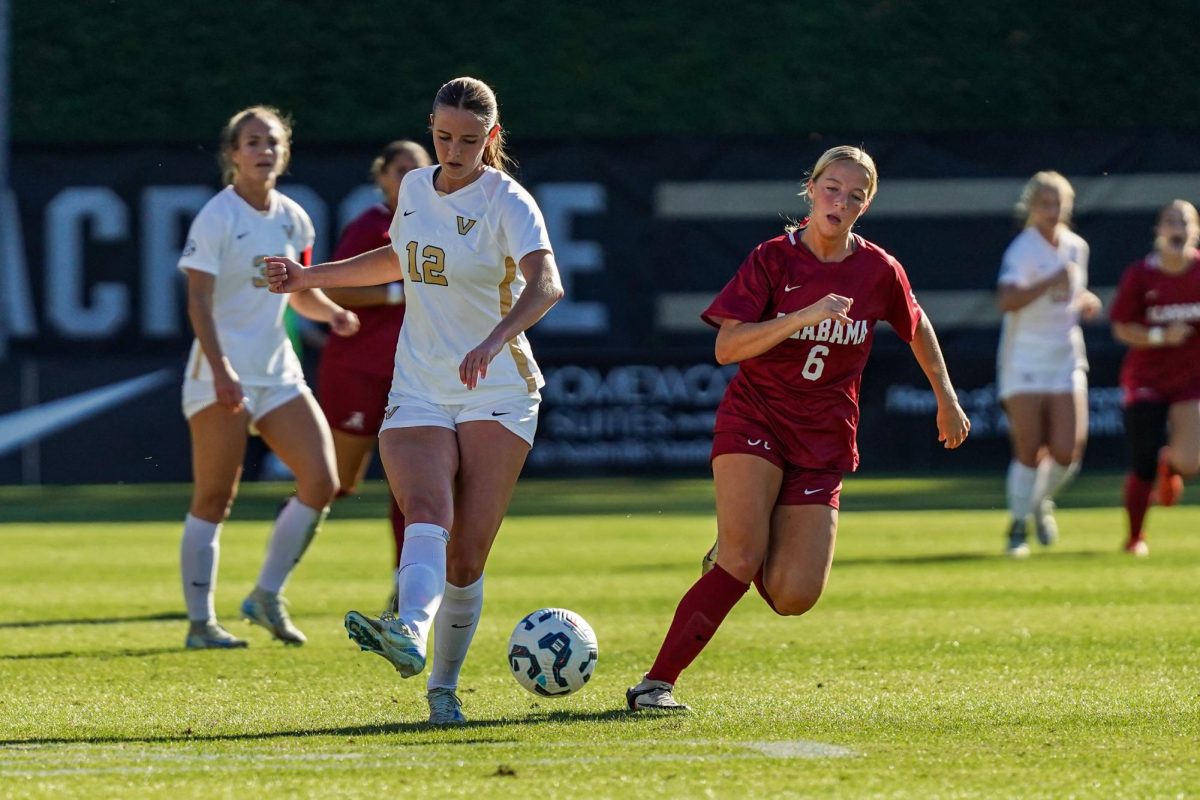Fifth-seeded Vanderbilt Soccer unexpectedly fell short against 12th-seeded Alabama in the SEC Tournament opening round Nov. 3 at the Brosnaham Soccer Complex in Pensacola, Florida.
The Commodores took an immediate hit when Alabama’s Nadia Ramadan scored in the ninth minute of the match. The Crimson Tide’s momentum remained strong, as Zivana Labovic scored just nine minutes later, extending the Crimson Tide’s lead to 2-0 just 18 minutes into the game. They kept this lead until the 77th minute when Vanderbilt sophomore Courtney Jones found sophomore Ella Eggleston on a corner kick assist. Eggleston’s precise header to the right side of the net closed the gap to 2-1 and reignited hope for the Commodores. The Black and Gold pressed harder in the final 10 minutes but were ultimately unable to put anything on the scoreboard.
Vanderbilt had high expectations to overcome the Crimson Tide after beating them in the final game of the regular season. The game also held extra weight for the Commodores since Alabama eliminated them in the 2022 tournament’s second round with a similar 2-1 defeat. So, what went wrong this time to allow Alabama to repeat history?
Early deficit
Alabama’s two early goals put the Commodores in a challenging position, forcing them to play catch-up from the outset. This early lead allowed Alabama to control the pace of the game, shifting the pressure onto Vanderbilt’s defense. This limited the Commodores’ ability to execute their own game plan.
Vanderbilt found it difficult to settle into a rhythm after Alabama’s aggressive start that capitalized on quick, decisive playmaking and an early, high-energy press. The early deficit caused Vanderbilt to push forward, which left it vulnerable to Alabama’s counterattacks, further hampering its ability to regain control.
Shooting and Efficiency
Vanderbilt outshot Alabama with 10 total shots to Alabama’s 9 — but only three of Vanderbilt’s shots were on target, compared to Alabama’s six. Vanderbilt’s inability to shoot on target created missed opportunities for it to break through Alabama’s defense.
In addition, Alabama’s higher shot-on-goal rate put consistent pressure on Vanderbilt’s defense and goalkeeper, senior Sara Wojdelko — who still managed four saves. Meanwhile, Alabama’s goalkeeper, Coralie Lallier, only faced three shots on target, reflecting the Crimson Tide’s ability to stop Vanderbilt’s chances before they became real threats. Vanderbilt’s inability to test Lallier consistently meant missed opportunities to shift momentum and wear down Alabama’s defense. This shooting inefficiency ultimately limited Vanderbilt’s scoring potential, leaving it unable to break through when it mattered most.
Set Piece Utilization
Vanderbilt had an advantage in corner kicks, earning four compared to Alabama’s one. This upper hand in set-piece opportunities offered Vanderbilt multiple chances to create high-quality scoring threats — especially valuable in a close match like this. However, the Commodores only managed to capitalize once: the 77th-minute connection between Jones and Eggleston.
Effective use of set pieces can be game-changing, especially against a defensive team like Alabama. Vanderbilt could have forced Alabama’s defense and goalkeeper into a high-pressure situation had it managed to execute more accurately on the earlier corners.
While they still fought to the last minute to try and come back, the effort wasn’t enough for the Commodores to overcome Alabama’s defensive structure and attacking plays. This early loss in the tournament highlights the need for Vanderbilt to refine key aspects of its play by focusing on defensive resilience early in the game, shooting accuracy and maximizing set pieces.
Vanderbilt’s postseason fate is still in the air, with hope resting on an at-large NCAA Tournament bid. Whether the Commodores’ season continues will be determined later this week.

